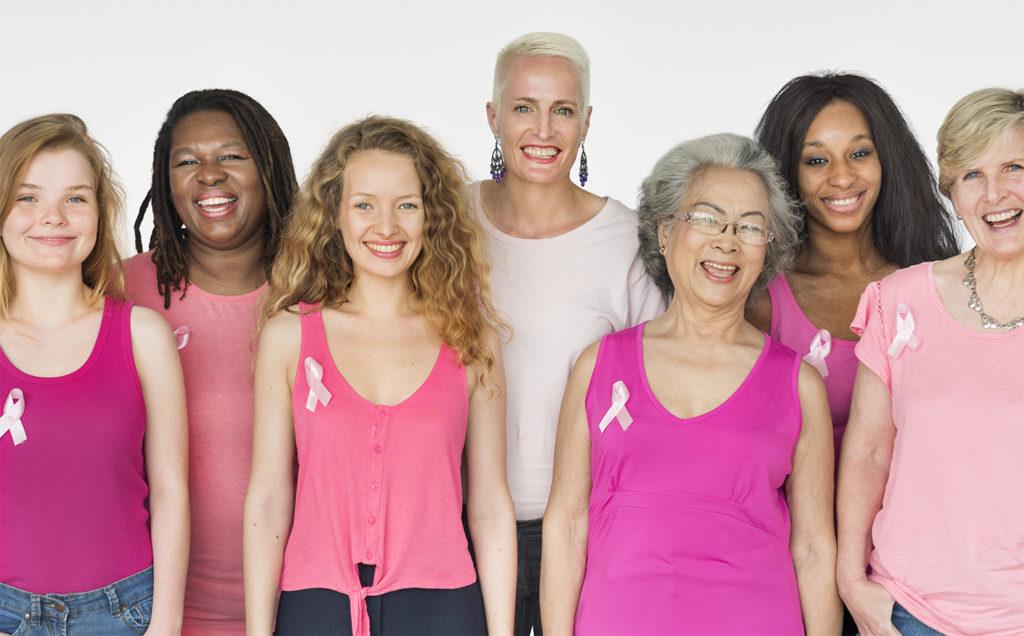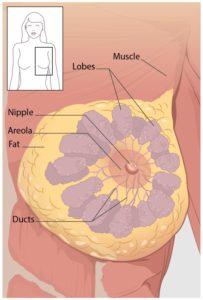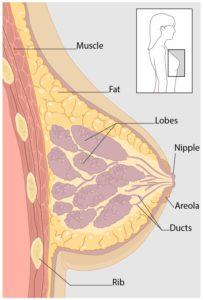Second to Nature Reviews Important Breast Health Information
This month, the focus is on some basic, but important, breast health information. Second to Nature in Roanoke, Virginia, is a regional source for breast cancer education, awareness, and support. To us, every day is an important day to share information that can help save lives affected by it.
No matter who you are, male or female, young or old, any type of cancer can be a significant health concern. The word “cancer” raises many emotions in the patient who has it, as well as extended family members. Before today’s modern imaging practices and other non-invasive tests, breast cancer was a word whispered with much fear and dread.
Today, as many women and men know, focus is more about empowerment and survival. It helps to have support from educated family and friends, armed with information about treatments and positive outcomes for breast health.
Defining Breast Cancer and How It Begins
The Centers for Disease Control (CDC) defines breast cancer as a disease in which cells in the breast grow out of control. Medical experts over the years have documented various kinds. The kind of breast cancer a person may experience depends on which cells in the breast become cancerous.
As you may know, the human breast consists of three main parts: Lobules, Ducts, and Connective Tissue.
Lobules – These are the glands that produce milk in the breast.
Ducts – These structures are tubes that carry milk to the nipple.
Connective Tissue – These surround structures and hold everything together.
Connective tissue in the breast may consist of both fibrous and fatty masses. Studies show most breast cancers start in the ducts or lobules. In short, breast cancer can start in different parts of the breast.
Cancerous cells may sit within the breast as a local mass or tumor. But cancer cells can spread outside the breast through blood and lymph vessels. Once cancer spreads from the breast to other parts of the body, it is said to have metastasized.
Looking Within – Views of the Breast Parts Inside
It can be one thing to read and know these parts of the breast exist, and another one to see them. Of course, these parts of the breast look much different underneath the skin. It can be helpful to have a few different views of how these breast parts appear on the inside.
Take a look at this anterior or front-view of the breast. Here you can see where all the parts are in a typical breast, along with the surrounding chest muscles.
This second image is a side or cross-section view of the breast, showing those same breast parts, and how they extend out from the ribcage of the chest.
Common Kinds of Breast Cancer
As mentioned above, most commonly start in the ducts or lobules. These are the most regular kinds of invasive breast cancer that tests may discover:
Invasive ductal carcinoma –
Invasive ductal carcinoma is where the cancer cells grow outside the ducts and into other parts of the breast tissue. With invasive cancer cells, it can also metastasize or spread to other parts of the body.
Invasive lobular carcinoma –
With invasive lobular carcinoma, cancer cells spread from the lobules to the nearby breast tissues. These invasive cancer cells have the ability to spread to other parts of the body.
Non-invasive Breast Cancer
In addition to these invasive types, there are several less-common types of breast cancer. Some of these include Paget’s disease and inflammatory breast cancer. Click on the names to link with fact sheets at cancer.gov. These fact sheets contain more information on these less-common types.
Ductal carcinoma in situ, or DCIS, is a kind of disease that may lead to breast cancer. With DCIS, the cells only appear to sit in the lining of the ducts alone. These cells have not spread to other breast parts or tissues in the breast.
Education is ‘Second Nature’ at Second to Nature
Because we know and speak about health matters every day, it may feel like “second nature” to our staff. We appreciate the journey of our clients who undergo mastectomy and other treatments. Meeting clients with knowledge and empathy helps the community at large. Education helps us understand, so we can relate to different situations. Whenever possible, we extend education to others in the Roanoke community.
Our ongoing commitment to professional development also keeps us up-to-date on the newest fashions, products, and other supports. This makes Second to Nature unique in the Roanoke area and a good partner for clients and their families who are going through the experience of recovery.
When it comes to your recovery after surgery, rely on Second to Nature’s caring staff to help. Be sure to stop back again over the next few months to read more on educational topics, including a special feature for young women.
Contact Second to Nature for an appointment at (540) 366-2711 or use our contact form. We are located in the Woodhaven Office Park, at 5450 Peters Creek Road, Roanoke, VA. Follow us on Facebook to stay up to date with the latest news and specials. We are dedicated to empowerment and education to answer ‘what is breast cancer’, and so much more.



